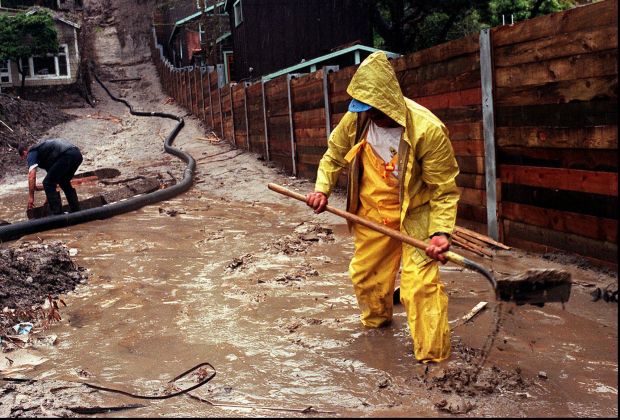Equipment Review, News
Batten Down the Hatches with Your Emergency Kit

Batten down the hatches and brace yourself and your family for a series of winter storms about to hit California. We need the rain but we are about to get hit starting this Wednesday with severe rainstorms, flooding, rock/mudslides, debris flows and even damaging winds are possible with this upcoming storm. The National Weather Service in Monterey, California, said Monday that this storm is “expected to be one of the strongest storms in terms of wind and rain intensity” since storms in October 2009 and January 2008.
Building a disaster supply kit for your family is simply a collection of basic items your family may need in the event of an emergency. Assemble your kit before you need to grab them for an emergency.
Whether the natural disaster an earthquake, a flood or storm, you should have enough provisions to last for at least 72 hours.
Gardenland Power Equipment recommends that you buy a lightweight portable generator like the Honda EU2000i or if you need to power a refrigerator or more devices then get the Honda EU3000i generator. The EU2000i is the most popular for camping and is extremely quiet and fuel-efficient. It will run up to 9.6 hours on one tank of gasoline because it has an eco-throttle setting to power down fuel consumption. We carry the complete line of Honda generators to fit your need.
If you rely on a gas powered generator to provide back-up power, will it start when you really need it to power-up? If the gas has been in the tank for more than 30-days it could be stale and prevent your generator from starting. We recommend using Trufuel instead of gasoline because it has a longer shelf life and cleans your fuel line to extend the life of your generator investment.
If you live in the mountains or near a lot of trees you might need a Honda gas power water pump and or a chainsaw to help clear-out standing water and fallen trees. We sell and service chainsaws made by Husqvarna, Stihl and Echo.
Emergency Supplies Recommended by The Federal Emergency Management Agency
Water, food, and clean air are important things to have if an emergency happens. Each family or individual’s kit should be customized to meet specific needs, such as medications and infant formula. It should also be customized to include important family documents.
Recommended Supplies to Include in a Basic Kit
– Water, one gallon of water per person per day, for drinking and sanitation
– Food, at least a three-day supply of non-perishable food
– Battery-powered radio and an NOAA Weather Radio with tone alert, and extra batteries for both
– Flashlight and extra batteries
– First Aid kit
– Whistle to signal for help
– Infant formula and diapers, if you have an infant
– Moist towelettes, garbage bags and plastic ties for personal sanitation
– Dust mask or cotton t-shirt, to help filter the air
– Plastic sheeting and duct tape to shelter-in-place
– Wrench or pliers to turn off utilities
– Can opener for food (if kit contains canned food)
Clothing and Bedding
If you live in a cold weather climate, you must think about warmth. It is possible that the power will be out and you will not have heat. Rethink your clothing and bedding supplies to account for growing children and other family changes. One complete change of warm clothing and shoes per person, including:
– A jacket or coat
– Long pants
– A long sleeve shirt
– Sturdy shoes
– A hat and gloves
– A sleeping bag or warm blanket for each person
Family Supply List
Below are some other items for your family to consider adding to its supply kit. Some of these items, especially those marked with a * can be dangerous, so please have an adult collect these supplies.
– Emergency reference materials such as a first aid book or a print out of the information on www.ready.gov
– Rain gear
– Mess kits, paper cups, plates, and plastic utensils
– Cash or traveler’s checks, change
– Paper towels
– Fire Extinguisher
– Tent
– Compass
– Matches in a waterproof container*
– Signal flare*
– Paper, pencil
– Personal hygiene items including feminine supplies
– Disinfectant*
– Household chlorine bleach* – You can use bleach as a disinfectant (diluted nine parts water to one part bleach), or in an emergency, you can also use it to treat water. Use 16 drops of regular household liquid bleach per gallon of water. Do not use scented, color safe or bleaches with added cleaners.
– Medicine Dropper
– Important Family Documents such as copies of insurance policies, identification and bank account records in a waterproof, portable container


